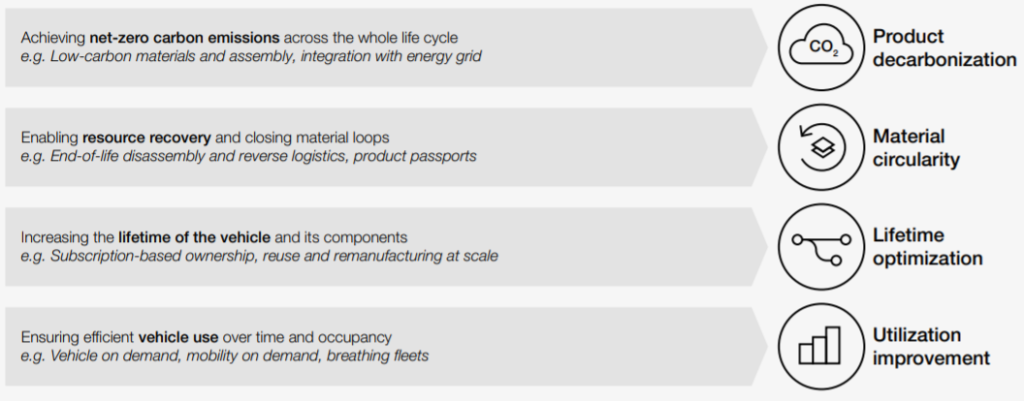
The current global linear, “take-make-dispose/waste”, economic growth path in wealth creation has reached its tipping points. Research has shown that this model’s heavy dependency on natural resources for production and consumption in a cradle to grave fashion is not regenerative and unsustainable. The Ellen MacArthur Foundation, (2019) for example, argues that the current global economic model that does not effectively design out waste, regenerate natural assets, and keep the value of materials cannot achieve the UN sustainable development goals and the 2015 Paris Agreement. Moreover, the COVID-19 pandemic has shown us that a prosperous economic system that reconciles growth, human wellbeing, inequalities, and environmental sustainability should be central in the economic recovery post-COVID-19.
A circular economy where waste and pollution is designed out, growth is decoupled from natural resources, innovation and value creation and preservation are central, and development is human and environment-centered is the only path that brings true wealth, human and planetary prosperity (Chen, 2020).
With circular economy ;

The 2015 Accenture Strategy research has shown that a circular economy could unlock US$4.5 trillion worthy economic opportunities by 2030. This is vital as it has the potential to crank out economies from COVID-19 induced economic recession. Its potential to create new decent jobs post-COVID-19 can bring a leap in closing the 255 million jobs lost during COVID1-19. The same Accenture Strategy report also shows that a circular economy can address up to 45% of the total global greenhouse gas (GHGs) emissions. A circular economy presents opportunities for new product and service innovations, enhancing business competitiveness and alleviating supply chain risks (Milan, 2020).
Circular economy may be achieved through five business models that Accenture Strategy posits including digital sharing platforms, Products-as-a-Service, Product Life Extension, Circular Supply Chains, and Recovery and Recycling. However, this systemic transformational change’s accelerated scaling up needs collaboration across all players in the economy.
The Platform for Accelerating the Circular Economy (PACE)’s Circular Economy Action Agenda represents one of the great collaborative efforts to guide circularity transition in the plastics, textiles, electronics, food, and capital equipment sectors. Circular Car Initiative focuses specifically on automobiles to achieve an automobility industry aligned with a 1.5ºC climate scenario. Capital equipment’s circularity with a focus on automobiles will be discussed here. Capital equipment constitutes 13% of global GDP, 23% of global waste annually, and accounts for 6.5% of total GHGs emissions, 6.5% annual materials consumption, and 56% of global ore consumption (Circle Economy, 2019). The circularity of capital equipment is a requisite to drive out this waste, ensuring carbon neutrality, saving natural resources, economic wellbeing and sustainability.
In the automobile industry, a circular economy can reduce GHGs emissions by at least 75%, and natural resource consumption by 80%. The graph below shows the 98% GHGs reduction impact that car circularity can have on the total emissions from the automobile industry.

It can be seen that phasing out combustion engines for electric batteries adoption alone will not do the job. Leveraging this on car circularity will be the best dividends paying way to drastically reduce carbon emissions.
How a circular car maximise value from resource consumption?

Accenture’s car circularity taxonomy provides stages to achieve automotive circularity up to the year 2050. Applying the value maximisation strategies above, the key car circularity transformations for sustainability are shown in figure 3 below;

Car manufacturers like BMW, Volvo, Renault, Volkswagen among others have already committed to carbon neutrality mainly through electrical vehicle and hydrogen cell fuel vehicle portfolios. However, as noted earlier to ensure circularity requires going beyond net-zero emission, companies like Groupe Renault, have taken the first move to establish a car circularity factory in Europe. Its four centers; Retrofit Re-Trofit, Re-Energy, Re-Cycle and Re-Start will be based on the car circularity transformational pathways. Retrofit will focus on extending life span through reconditioning to less carbon-intensive energy vehicles. Re-Energy focuses on upgrading the electrical ecosystem and new energy battery repair and giving a battery second life whilst Recycling focuses on the collection, dismantling, re-use, remanufacturing, and recycling and lastly Re-start focusing on innovation and knowledge sharing-startup incubators, research, and mobility as a service.
A glance on the Groupe Renault Car Circular economy;
References used
CHEN, C.-W. 2020. Improving Circular Economy Business Models: Opportunities for Business and Innovation: A new framework for businesses to create a truly circular economy. Johnson Matthey Technology Review, 64, 48-58.
Circular Car Initiative and World Economic Forum. 2020. ‘The Road Ahead: A Policy Research Agenda for Automotive Circularity.’ http://www3.weforum.org/docs/WEF_A_policy_research_agenda_for_automotive_circularity_2020.pdf.
Circular Car Initiative, World Economic Forum and Accenture Strategy. 2020. ‘Raising Ambitions: A New Roadmap for the Automotive Circular Economy’ http://www3.weforum.org/docs/WEF_Raising_Ambitions_2020.pdf.
Circle Economy. 2020. ‘The Circularity Gap Report 2020. When Circularity Goes From Bad to Worse: The Power of Countries to Change the Game.’ https://pacecircular.org/sites/default/files/202001/Circularity%20Gap%20Report%202020.pdf
Ellen MacArthur Foundation and Material Economics. 2019. ‘Complete the Picture: How the Circular Economy Tackles Climate Change’. Https://www.ellenmacarthurfoundation.org/assets/downloads/Completing_The_Picture_How_The_Circular_Economy-_Tackles_Climate_Change_ V3_26_September.pdf.
Lacy, P., W. Spindler, and J. Long. 2020. ‘The Circular Economy Handbook.’ Accenture. https://www.accenture.com/us-en/about/ events/the-circular-economy-handbook.
MILAN, U. 2020. Circular economy, sustainable capitalism. Università Ca’Foscari Venezia.
WEF 2020: The Road Ahead: A policy research agenda for automotive circularity CIRCULAR CARS INITIATIVE POLICY WORKSTREAM DECEMBER 2020
WEF & Accenture Strategy. 2020. Raising Ambitions: A new roadmap for the
automotive circular economy CIRCULAR CARS INITIATIVE BUSINESS MODELS CLUSTER DECEMBER 2020
WEF & McKinsey & Company. 2020. Forging Ahead A materials roadmap for the zero-carbon car CIRCULAR CARS INITIATIVE MATERIALS DECEMBER 2020
